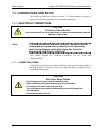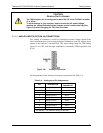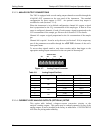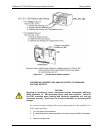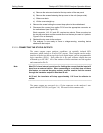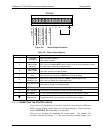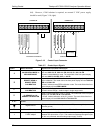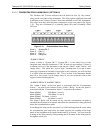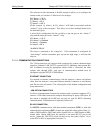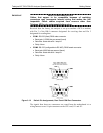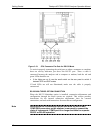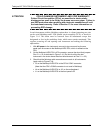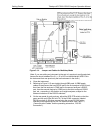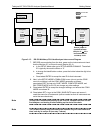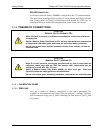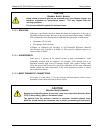
Getting Started Teledyne API T803 CO2/O2 Analyzer Operation Manual
40
The software for this instrument is flexible enough to allow you to configure the
alarms so that you can have 2 alarm levels for each gas.
CO
2
Alarm 1 = 20 %
CO
2
Alarm 2 = 100 %
O
2
Alarm 1 = 20 %
O
2
Alarm 2 = 100 %
In this example, O
2
Alarm 1 & CO
2
Alarm 1 will both be associated with the
“Alarm 2” relay on the rear panel. This allows you to have multiple alarm levels
for individual gases.
A more likely configuration for this would be to put one gas on the “Alarm 1”
relay and the other gas on the “Alarm 2” relay.
CO
2
Alarm 1 = 20 %
CO
2
Alarm 2 = Disabled
O
2
Alarm 1 = Disabled
O
2
Alarm 2 = 80 %
“ALARM 4” RELAY
This relay is connected to the “range bit”. If the instrument is configured for
“Auto Range”, and the instrument goes up into the high range, it will turn this
relay on.
3.3.1.8. COMMUNICATION CONNECTIONS
The T-Series analyzers are equipped with connectors for remote communications
interfaces: Ethernet, USB, RS-232, optional RS-232 Multidrop, and optional RS-
485. In addition to using the appropriate cables (Table 1-1 describes the cable
options, 60A through 60D), each type of communication m
ethod must be
configured using the SETUP>COMM menu.
ETHERNET CONNECTION
For network or Internet communication with the analyzer, connect an Ethernet
cable from the analyzer’s rear panel Ethernet interface connector to an Ethernet
port. Please refer to Section 6.3 for a description of the default configuration and
setup instructions.
USB OPTION CONNECTION
For direct communication between the analyzer and a personal computer (PC),
connect a USB cable between the analyzer and desktop or laptop USB ports. (If
this option is installed, the COM2 port can only be used for RS232 multidrop
communication). USB download is required (Section 6.4).
RS-232 CONNECTION
For RS-232 communications with data terminal equipment (DTE) or with data
communication equipment (DCE) connect the applicable cable option (Table 1-1:
either a DB9-fe
male-to-DB25-male cable, Option 60A, or a DB9-female-to-DB9-
female cable, Option 60B) from the analyzer’s rear panel RS-232 port to the
device. Adjust the DCE-DTE switch located on the rear panel (Figure 3-4) to
select DTE or DCE as appr
opriate (Section 6.1).
07276B DCN6418



